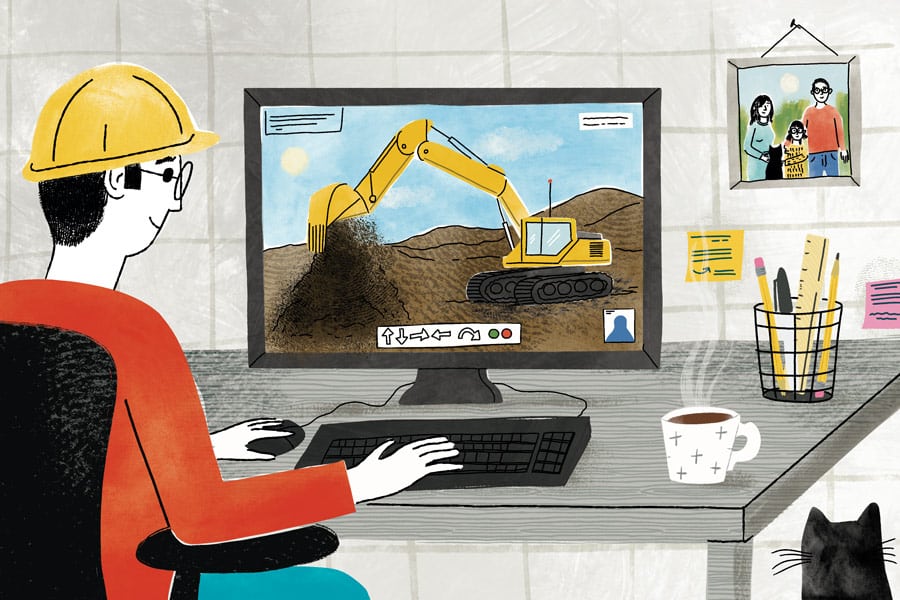When the industry first turned a critical eye on construction and demolition (C&D) waste in the early 2000s, it was just a sliver of a larger standard promoted by the U.S. Green Building Council (USGBC). Greater energy efficiency and healthier materials sounded intriguing, but less waste was a bit of a bore. After all, China would take just about anything we’d send—until they wouldn’t.
By 2017, China had become the world’s dumping ground. Companies could even ship recyclable waste mixed with contaminated items and food debris. To improve environmental conditions, the country initially implemented the National Sword policy to adopt higher standards for imported material. But as of 2021, China no longer buys solid waste, although it still imports scrap metal.
An end-to-end approach
The Environmental Protection Agency estimates that the United States generated 600 million tons of C&D debris in 2018, the last year for which data is available. Demolition represents more than 90%, with construction the other 10%. The materials include everything from steel, wood, drywall and plaster to tile, shingles and concrete.
To tackle the waste problem, the construction industry needs to examine waste management practices across the lifecycle of materials. “We know we’re not going to recycle our way to zero waste,” said Susie Westrup, director, client solutions at Total Resource Use & Efficiency (TRUE), USGBC. “We need to be working to design waste out of the system in the first place.”
The TRUE certification program can help facilities, businesses and communities as they define, pursue and ultimately achieve their zero waste goals. Their whole systems approach aims to change material flows and divert all solid waste from landfills, incineration and the environment. The approach is based on the circular economy; it emphasizes using waste from one cycle as feedstock for the next one. This end-to-end focus provides a framework the construction industry can use to handle a longstanding and ever-growing problem.
The four Rs
The EPA’s strategy for managing C&D waste and reaping the environmental and economic benefits focuses on four steps: reduce, reuse, recycle and rebuy.
Reduce: By using fewer resources from the start, construction firms can ensure materials don’t end up in the waste stream. Practices include preserving existing buildings, sizing new structures correctly and employing construction methods that allow materials to be used in new buildings later.
Construction firms need to look upstream, evaluating everything that goes into a project to ensure it doesn’t contribute to waste. The TRUE diversion calculator even accounts for packaging waste—for example, if a contractor diverts shipping pallets from the waste stream by using them for other purposes instead of recycling them.
Reuse: Demolition that turns everything—usable or not—into debris doesn’t support efficient resource use. Deconstructing buildings lets firms salvage and reuse C&D materials. That doesn’t mean general contractors need to put every last component of an existing structure to use—they can also resell materials. In Tennessee, the Materials Marketplace encourages participation in the circular economy. For example, if a general contractor has 1,000 linear feet of PVC pipe, it can post that on the website to find a buyer, instead of sending it to a landfill.
“Zero waste is very localized,” Westrup said. “It takes knowing your neighbor, knowing the people in your community that could use materials and having those conversations.” Waste that can’t be reused should be transported to recycling facilities.
Recycle: Where the market exists, construction firms can recycle materials, like asphalt, concrete, wood and metals. The EPA provides best practices on its website.
Rebuy: On the flip side of reuse is buying C&D materials and recycled content locally for use in construction. Not only does this save cost while maintaining function and performance, but it also supports the local economy.
Going full circle
As in many areas of environmental innovation, California leads the way in managing construction waste.
The Bay Area city of Palo Alto, for example, passed an ordinance in 2019 that prevented contractors from demolishing entire buildings after July 2020. The goal is to reuse or recycle building materials, which means saying goodbye to the wrecking ball. Instead, construction workers will take structures apart and find places for materials to be used.
TRUE requirements push the reduction of waste for LEED certification to the next level. Practices can be as simple as ensuring there are separate trash cans and compost bins on site for leftovers from lunch, so material that could be recycled won’t be contaminated.
But TRUE treats incinerating materials as just as bad for the environment as putting them in a landfill, even if heat and energy are produced. Facilities that successfully divert 90% or more of their overall waste over a period of 12 months—and also implement minimum program requirements within the TRUE rating system—achieve certification.
Ahead of the curve
Zero waste for C&D is a daunting but achievable goal. Getting started means learning how the circular economy applies to C&D, reading case studies of successful—and unsuccessful—projects and gaining enough confidence to put the steps into action. In addition to the EPA, other sources for information on managing C&D waste include the Recycling Certification Institute and the European Environment Agency.












